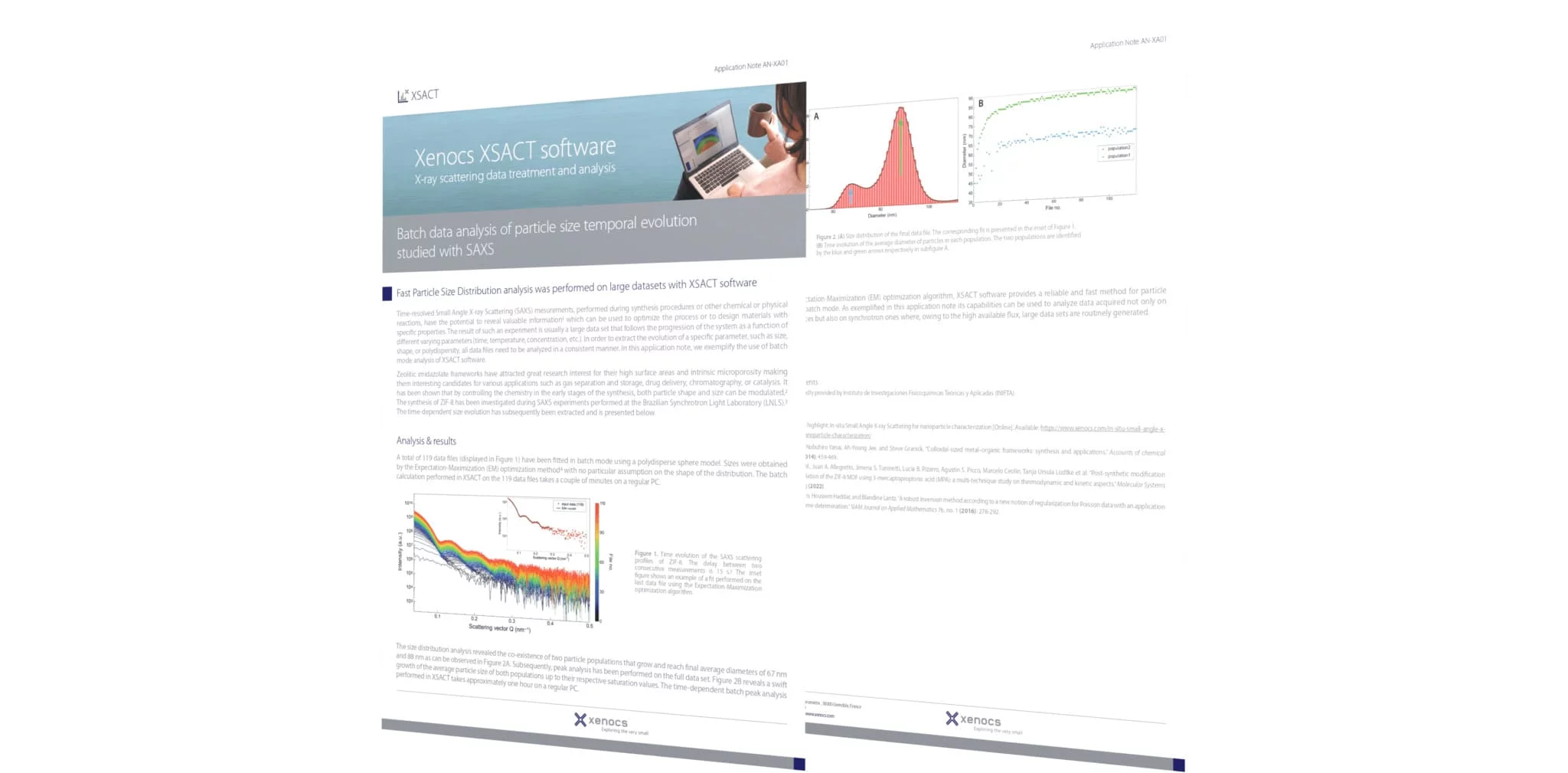Fast Particle Size Distribution analysis was performed on large datasets with XSACT software
Introduction
Time-resolved Small Angle X-ray Scattering (SAXS) mesurements, performed during synthesis procedures or other chemical or physical reactions, have the potential to reveal valuable information1 which can be used to optimize the process or to design materials with specific properties. The result of such an experiment is usually a large data set that follows the progression of the system as a function of different varying parameters (time, temperature, concentration, etc.). In order to extract the evolution of a specific parameter, such as size, shape, or polydispersity, all data files need to be analyzed in a consistent manner. In this application note, we exemplify the use of batch mode analysis of XSACT software.
Zeolitic imidazolate frameworks have attracted great research interest for their high surface areas and intrinsic microporosity making them interesting candidates for various applications such as gas separation and storage, drug delivery, chromatography, or catalysis. It has been shown that by controlling the chemistry in the early stages of the synthesis, both particle shape and size can be modulated.2 The synthesis of ZIF-8 has been investigated during SAXS experiments performed at the Brazilian Synchrotron Light Laboratory (LNLS).3 The time-dependent size evolution has subsequently been extracted and is presented in this application note together with explanations of the method used.

































